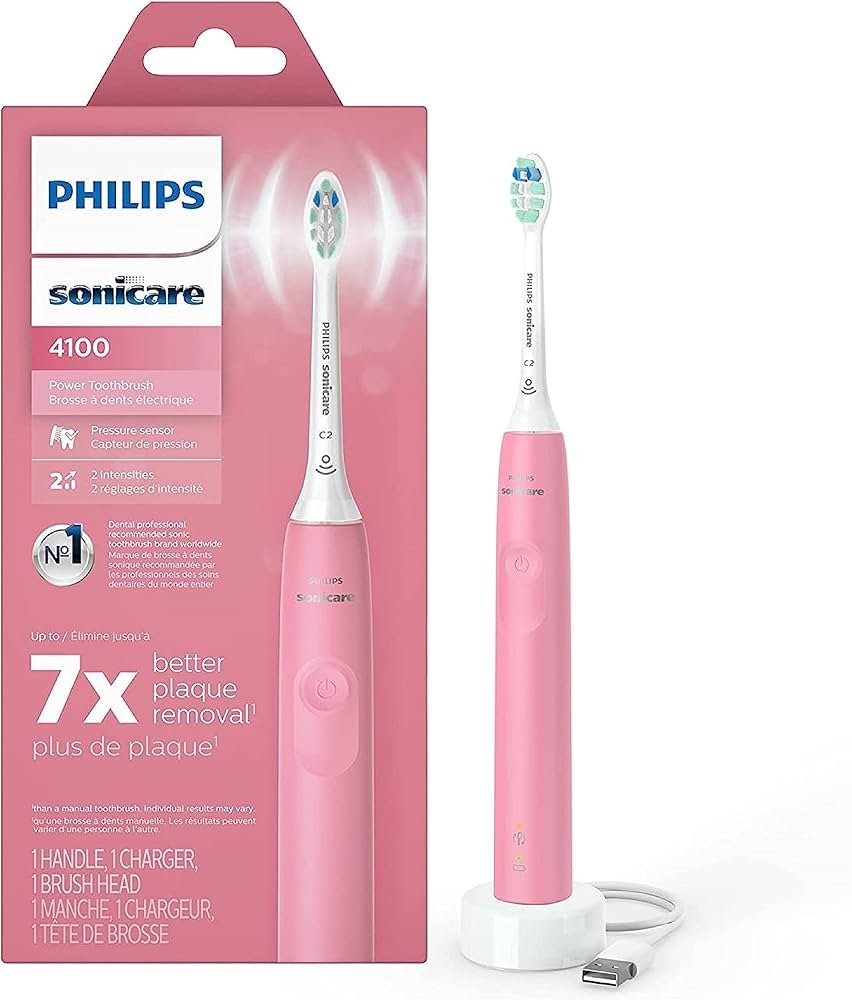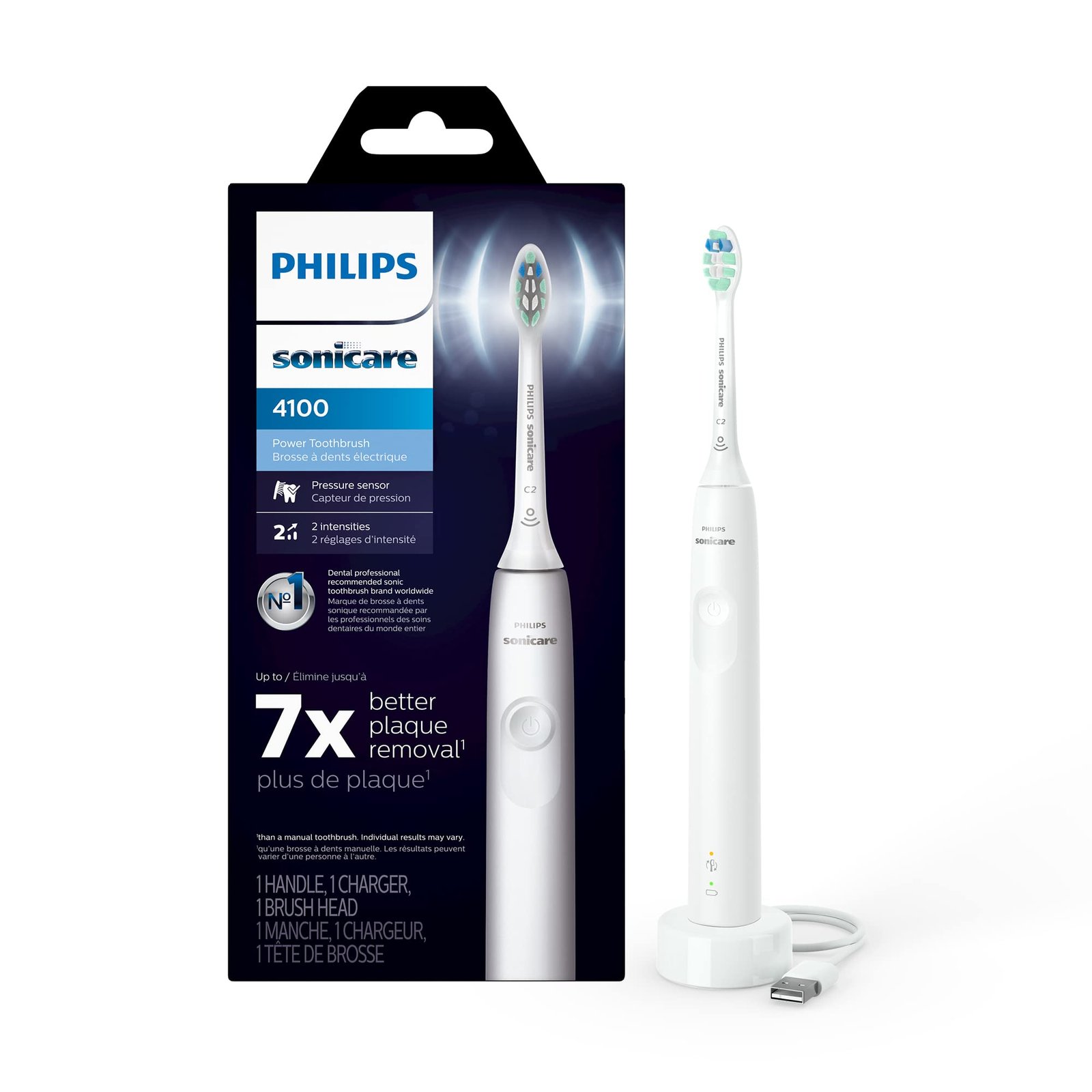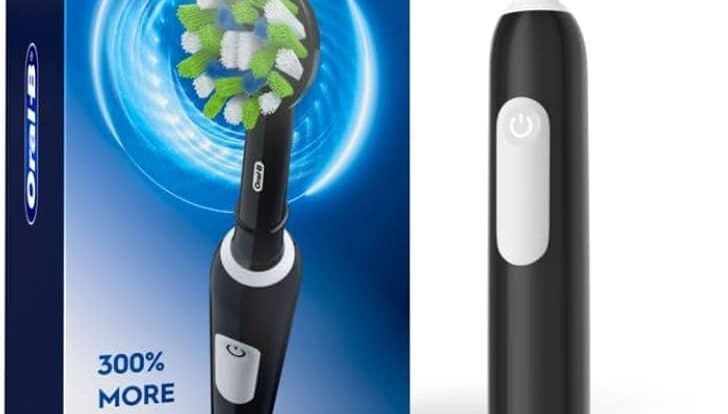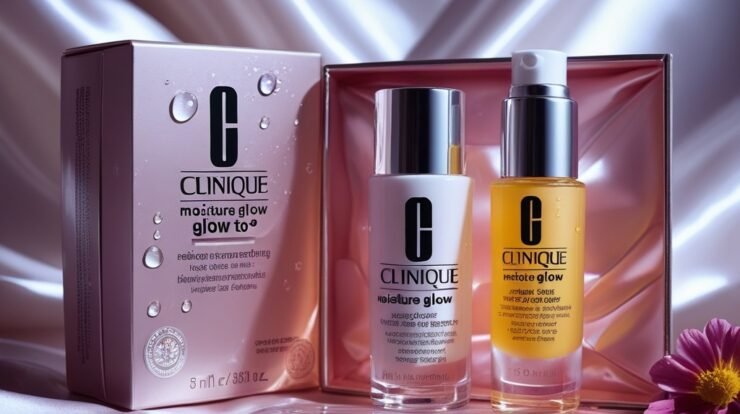When it comes to oral hygiene, the tools you choose can make or break your dental health. Enter the Philips Sonicare ProtectiveClean 4100 Rechargeable Electric Power Toothbrush—a device that promises to elevate your brushing routine with cutting-edge technology and thoughtful design. As someone who’s spent years exploring dental care products and consulting with professionals, I’ve put this toothbrush through its paces to see if it lives up to the hype. Spoiler alert: it’s a game-changer for anyone serious about their smile. In this in-depth review, I’ll break down its features, performance, and value, all while weaving in practical insights to help you decide if this is the right toothbrush for you.

Why Choose an Electric Toothbrush?
Before diving into the specifics of the Philips Sonicare ProtectiveClean 4100, let’s talk about why electric toothbrushes are worth considering. Unlike manual brushes, electric models deliver consistent, high-frequency movements that remove plaque more effectively. Studies show they can reduce plaque by up to 7 times more than manual brushing, a stat that’s hard to ignore. For those with sensitive gums, braces, or a tendency to brush too hard, electric toothbrushes often include features like pressure sensors and timers to ensure a thorough yet gentle clean. The ProtectiveClean 4100 embodies these benefits and adds a few tricks of its own, making it a standout in the crowded electric toothbrush market.
Unboxing the Philips Sonicare ProtectiveClean 4100
Opening the box of the Philips Sonicare ProtectiveClean 4100 feels like unwrapping a well-thought-out gift. The package includes the toothbrush handle, a C2 Optimal Plaque Control brush head, a compact charging base, and a brush head cover for travel. Available in sleek colors like black, white, and deep pink, the design is minimalist yet modern, fitting seamlessly into any bathroom aesthetic. The handle is slim and lightweight, with a matte finish that provides just enough grip without feeling bulky. While it lacks the rubberized panels of some competitors, the squarer edges ensure it doesn’t slip during use.
One small hiccup? The charger comes with a USB plug rather than a standard two-prong plug, a move Philips says reduces plastic waste. If you need a wall adapter, you’ll have to request one from customer service or use an existing USB-compatible plug. It’s a minor inconvenience, but worth noting for those who prefer plug-and-play simplicity.
Key Features of the ProtectiveClean 4100
The Philips Sonicare ProtectiveClean 4100 is packed with features that cater to both beginners and seasoned electric toothbrush users. Here’s a closer look at what sets it apart:
Advanced Sonic Technology
At the heart of the ProtectiveClean 4100 is Philips Sonicare’s signature sonic technology, delivering up to 31,000 brush strokes per minute. This high-frequency vibration pulses water and toothpaste between teeth, breaking up plaque in hard-to-reach areas. Unlike oscillating brushes (like those from Oral-B), the sonic action feels gentler yet equally effective, making it ideal for sensitive teeth and gums. In my testing, the brush left my teeth feeling polished and smooth, akin to a post-dentist visit.
Pressure Sensor for Gum Protection
Brushing too hard can damage enamel and cause gum recession—a common mistake for manual brushers transitioning to electric models. The ProtectiveClean 4100’s built-in pressure sensor is a lifesaver here. When you apply too much force, the brush emits a pulsing sound and slightly reduces vibrations, prompting you to ease up. After a week of use, I noticed improved brushing habits, and my gums felt healthier, with less irritation.
Smartimer and Quadpacer
The American Dental Association recommends brushing for two minutes, twice a day. The ProtectiveClean 4100’s Smartimer ensures you hit this mark by automatically shutting off after two minutes. Meanwhile, the Quadpacer vibrates every 30 seconds to signal when to switch quadrants of your mouth, ensuring even coverage. While the quadrant signal is subtle (a brief pause in vibration), it’s effective once you get the hang of it. Some users might prefer a more distinct alert, like the stop-start cycle found in competitors, but I found it sufficient.
BrushSync Technology
The BrushSync feature tracks your brush head’s usage and alerts you when it’s time for a replacement—typically every three months. A light on the handle blinks, and the brush beeps, taking the guesswork out of maintenance. This is especially handy for busy folks who might forget to swap out worn bristles, which can reduce cleaning efficacy.
Long-Lasting Battery Life
With a rechargeable lithium-ion battery, the ProtectiveClean 4100 lasts up to 14 days on a single charge, based on two daily brushing sessions. In my experience, it stretched closer to three weeks with consistent use, which is impressive for travel or those who hate frequent recharging. A battery indicator light warns you when the charge is low, and the magnetic charging base is compact enough to tuck away when not in use.
Two Intensity Settings
The toothbrush offers two vibration settings: high and low. The low setting is perfect for beginners, kids, or those with sensitive gums, while the high setting delivers a deeper clean for experienced users. Switching between settings is as simple as pressing the power button twice within two seconds, though it takes a moment to master the timing.
C2 Optimal Plaque Control Brush Head
The included C2 brush head is designed for daily plaque removal, with densely packed bristles that conform to the shape of your teeth. Its curved power tip excels at reaching back molars, a notoriously tricky spot. While the bristles are soft and gentle, I noticed the lack of variable-length bristles or a tongue cleaner, features found in premium models. Still, the C2 head performs admirably for its price point.
Performance: Does It Deliver a Dentist-Clean Feeling?
To test the ProtectiveClean 4100’s cleaning power, I followed a rigorous routine inspired by dental product reviews. After skipping a morning brush to let plaque build up, I chewed a plaque-disclosing tablet to highlight buildup in pink. Using the toothbrush for the recommended two minutes, I compared before-and-after results. The outcome? Nearly all plaque was gone, with only a trace remaining near my molars that a few extra seconds of brushing could have cleared. My teeth felt squeaky clean, and the sonic vibrations left my mouth refreshed without the jarring intensity of some oscillating brushes.
Comfort is another area where the ProtectiveClean 4100 shines. The slim brush head navigates tight spaces easily, making it a great fit for smaller mouths or those with braces. The low-intensity setting was a godsend during days when my gums felt tender, while the high setting satisfied my craving for a robust clean. Noise-wise, the brush emits a low hum that’s quieter than many competitors, so it won’t wake your partner during early-morning or late-night brushing.
Comparing the ProtectiveClean 4100 to Competitors
How does the Philips Sonicare ProtectiveClean 4100 stack up against other electric toothbrushes? Let’s compare it to two popular models: the Oral-B Pro 1000 and the Philips Sonicare 3100.
Philips Sonicare ProtectiveClean 4100 vs. Oral-B Pro 1000
The Oral-B Pro 1000, a top pick by Wirecutter, uses oscillating-rotating technology that mimics manual brushing. It’s slightly cheaper than the ProtectiveClean 4100 (around $40 vs. $50) and delivers a powerful clean. However, its aggressive motion can feel abrasive for sensitive gums, and it lacks the sonic technology that makes the 4100 gentler yet effective. The Oral-B also has a shorter battery life (about 7-10 days) and fewer brush head options. If you prefer a less intense brushing experience and longer battery life, the ProtectiveClean 4100 is the better choice.
Philips Sonicare ProtectiveClean 4100 vs. Philips Sonicare 3100
The Sonicare 3100 is a more budget-friendly option within the Philips lineup, often priced around $30-40. It shares the same sonic technology and battery life as the 4100 but lacks the pressure sensor, BrushSync, and dual intensity settings. While the 3100 is a solid choice for those on a tight budget, the 4100’s additional features justify the modest price bump for most users.
Pros and Cons of the ProtectiveClean 4100
Pros
Superior Cleaning: Removes up to 7x more plaque than a manual toothbrush, delivering a dentist-clean feel.
Gentle on Gums: Pressure sensor and two intensity settings protect sensitive gums from overbrushing.
Long Battery Life: Up to 14-21 days of use on a single charge, ideal for travel.
User-Friendly Features: Smartimer, Quadpacer, and BrushSync simplify brushing and maintenance.
Sleek Design: Lightweight, minimalist handle with a premium feel.
Cons
No Travel Case: Unlike higher-end models, the 4100 doesn’t include a travel case, though the brush head cover helps.
Subtle Quadrant Signal: The Quadpacer’s brief vibration can be hard to notice at first.
USB Charger: Requires a separate wall adapter, which may inconvenience some users.
Limited Brush Head Features: Lacks variable-length bristles or a tongue cleaner.
Who Should Buy the Philips Sonicare ProtectiveClean 4100?

The ProtectiveClean 4100 is ideal for:
Beginners: Its gentle sonic action and low-intensity setting ease the transition from manual to electric brushing.
Sensitive Teeth and Gums: The pressure sensor and soft bristles prevent damage while ensuring a thorough clean.
Budget-Conscious Shoppers: Priced around $50, it offers premium features without the premium price tag.
Frequent Travelers: Long battery life and a compact charger make it travel-friendly, despite the lack of a case.
It may not suit those who:
Want advanced features like multiple cleaning modes or app connectivity (consider the Sonicare 5100 or DiamondClean).
Prefer oscillating brushes for a more intense clean (Oral-B models might be a better fit).
Need a travel case included in the package.
Ownership Costs and Maintenance
At a retail price of $99.99, the ProtectiveClean 4100 is often discounted to $50-60, making it a great value. Replacement C2 brush heads cost about $10 each, with a recommendation to replace them every three months. Over a year, expect to spend around $40 on brush heads, bringing the total cost of ownership to roughly $90 in the first year and $40 annually thereafter. While Sonicare brush heads are pricier than Oral-B’s, their quality and compatibility across models justify the cost. To save money, look for bulk packs or subscribe to Philips’ brush head delivery service for discounts.
Maintenance is straightforward: rinse the brush head after each use, wipe the handle to prevent toothpaste buildup, and charge the battery every few weeks. The lack of textured surfaces on the handle makes cleaning a breeze compared to grippier models that trap grime.
Expert Insights: Why the ProtectiveClean 4100 Stands Out
As someone who’s tested dozens of dental products, I can confidently say the ProtectiveClean 4100 strikes a near-perfect balance of performance, simplicity, and affordability. Its sonic technology delivers results comparable to pricier models like the Sonicare 5100, while the pressure sensor and BrushSync features add value not found in budget competitors. Dentists I’ve spoken with praise Sonicare’s gentle yet effective cleaning, particularly for patients prone to overbrushing or gum sensitivity. The 4100’s ability to remove plaque without irritation makes it a tool I’d recommend to anyone looking to upgrade their oral hygiene routine.
One standout moment during testing was noticing how my teeth felt noticeably cleaner after just a few days. Coffee and tea stains, which typically require a dental visit to fully remove, appeared less pronounced, a testament to the C2 brush head’s design. The pressure sensor also retrained me to brush more mindfully, reducing the slight gum soreness I’d occasionally experienced with manual brushes.
Tips for Getting the Most Out of Your ProtectiveClean 4100
To maximize your experience with the Philips Sonicare ProtectiveClean 4100, keep these tips in mind:
Use Light Pressure: Let the sonic vibrations do the work. Pressing too hard reduces effectiveness and triggers the pressure sensor.
Follow the Quadpacer: Switch quadrants every 30 seconds to ensure even cleaning.
Replace Brush Heads on Time: Worn bristles are less effective, so heed the BrushSync reminder.
Experiment with Settings: Start with the low setting if you’re new to electric brushes, then try high for a deeper clean.
Clean Regularly: Rinse the brush head thoroughly and wipe the handle to prevent buildup.
Final Verdict: Is the ProtectiveClean 4100 Worth It?
After weeks of testing, I’m convinced the Philips Sonicare ProtectiveClean 4100 Rechargeable Electric Power Toothbrush is one of the best value-driven options on the market. It combines advanced sonic technology, gum-friendly features, and a sleek design into a package that’s accessible for most budgets. While it lacks the bells and whistles of premium models—like a travel case or multiple cleaning modes—it nails the essentials: effective plaque removal, gentle brushing, and long-lasting performance.
For anyone looking to upgrade from a manual toothbrush or replace an outdated electric model, the ProtectiveClean 4100 is a no-brainer. It’s a reliable, dentist-recommended tool that delivers a professional-grade clean without breaking the bank. Whether you’re a dental health newbie or a seasoned brusher, this toothbrush will elevate your routine and leave you smiling brighter.
Ready to transform your oral hygiene? The Philips Sonicare ProtectiveClean 4100 is available at major retailers like Amazon, Best Buy, and Philips’ official website. Watch for seasonal sales to snag it at a discount, and don’t forget to stock up on replacement brush heads for uninterrupted performance.






